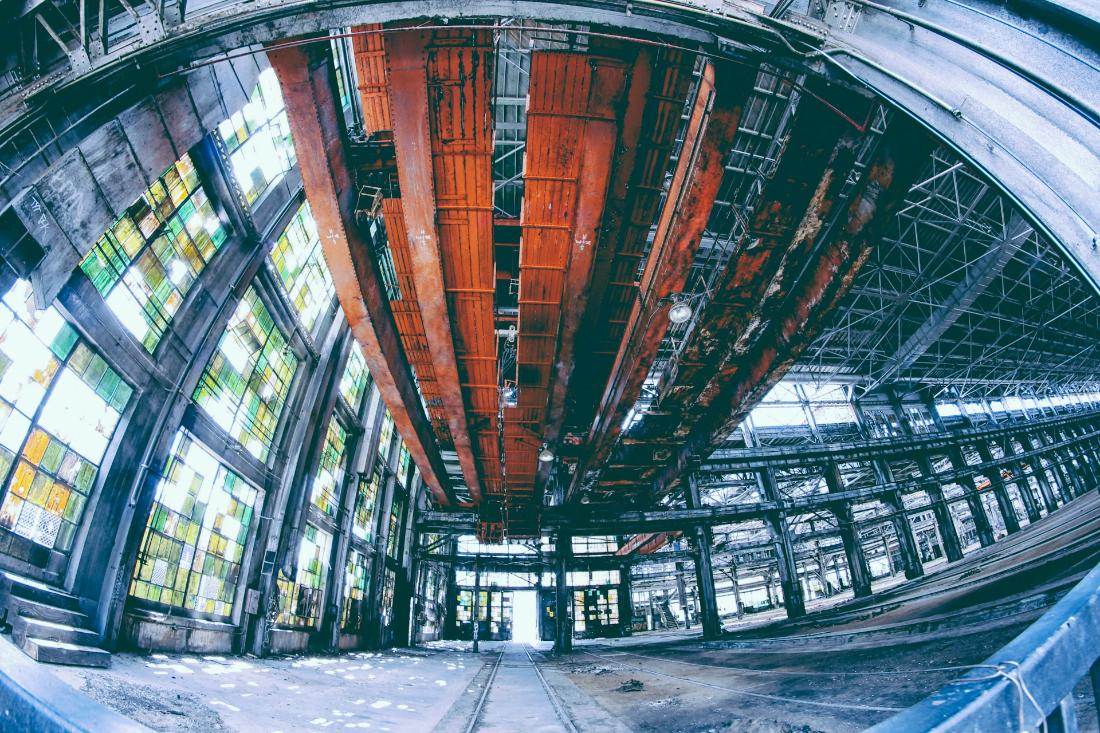Structure
How to Build a Strong Structure for a Building: A Foundation for Success
Dec 24 2024
Building a structure, whether it's a cozy home or a towering skyscraper, is a complex undertaking. But at its core, it's about creating a safe, durable, and functional space for people to live, work, and thrive. And the key to achieving this lies in a strong, well-planned structure. This article delves into the essential elements of building a robust structure, emphasizing the human element and practical considerations.
Understanding the Importance of a Strong Structure
The structure of a building is its skeleton, the framework that supports everything else. It's what keeps the building upright, protects it from the elements, and ensures the safety of its occupants. A weak or poorly designed structure can lead to catastrophic consequences, from minor cracks and leaks to complete collapse. Therefore, understanding the principles of structural integrity is paramount.
Understanding the Importance of a Strong Structure
The structure of a building is its skeleton, the framework that supports everything else. It's what keeps the building upright, protects it from the elements, and ensures the safety of its occupants. A weak or poorly designed structure can lead to catastrophic consequences, from minor cracks and leaks to complete collapse. Therefore, understanding the principles of structural integrity is paramount.
Key Elements of a Strong Building Structure
Several key elements contribute to a strong building structure:
Foundation: The foundation is the base upon which the entire building rests. It transfers the building's load to the ground. The type of foundation depends on soil conditions, building size, and local climate. Common types include:
Shallow Foundations: Used for smaller buildings on stable soil. Examples include strip footings, pad foundations, and raft foundations.
Deep Foundations: Used for larger buildings or on unstable soil. Examples include piles and piers.
Framing: The framing forms the vertical and horizontal support system of the building. It distributes the load from the roof and walls to the foundation. Common framing materials include:
Wood: Widely used for residential construction due to its cost-effectiveness and ease of use.
Steel: Used for larger buildings due to its high strength and durability.
Reinforced Concrete: A combination of concrete and steel reinforcing bars (rebar), providing excellent strength and versatility.
Walls: Walls provide enclosure, insulation, and structural support. They can be load-bearing, meaning they support the weight of the structure above, or non-load-bearing, simply acting as partitions.
Roof: The roof protects the building from the elements. It must be strong enough to withstand wind, snow, and rain. Roof types vary depending on the building's design and climate.
Several key elements contribute to a strong building structure:
Foundation: The foundation is the base upon which the entire building rests. It transfers the building's load to the ground. The type of foundation depends on soil conditions, building size, and local climate. Common types include:
Shallow Foundations: Used for smaller buildings on stable soil. Examples include strip footings, pad foundations, and raft foundations.
Deep Foundations: Used for larger buildings or on unstable soil. Examples include piles and piers.
Framing: The framing forms the vertical and horizontal support system of the building. It distributes the load from the roof and walls to the foundation. Common framing materials include:
Wood: Widely used for residential construction due to its cost-effectiveness and ease of use.
Steel: Used for larger buildings due to its high strength and durability.
Reinforced Concrete: A combination of concrete and steel reinforcing bars (rebar), providing excellent strength and versatility.
Walls: Walls provide enclosure, insulation, and structural support. They can be load-bearing, meaning they support the weight of the structure above, or non-load-bearing, simply acting as partitions.
Roof: The roof protects the building from the elements. It must be strong enough to withstand wind, snow, and rain. Roof types vary depending on the building's design and climate.
The Human Element in Structural Design
While engineering principles and calculations are crucial, the human element plays a vital role in building a strong structure.
Skilled Labor: Experienced and skilled construction workers are essential for accurately interpreting blueprints, properly installing materials, and ensuring quality workmanship. Their expertise ensures the structural integrity of the building.
Communication and Collaboration: Effective communication and collaboration between architects, engineers, contractors, and construction workers are crucial for avoiding errors and ensuring the project stays on track.
Safety First: Prioritizing safety throughout the construction process is paramount. This includes implementing safety protocols, providing proper training, and using appropriate safety equipment.
Adaptability and Problem-Solving: Construction projects often encounter unexpected challenges. The ability to adapt to changing conditions and solve problems creatively is crucial for successful project completion.
While engineering principles and calculations are crucial, the human element plays a vital role in building a strong structure.
Skilled Labor: Experienced and skilled construction workers are essential for accurately interpreting blueprints, properly installing materials, and ensuring quality workmanship. Their expertise ensures the structural integrity of the building.
Communication and Collaboration: Effective communication and collaboration between architects, engineers, contractors, and construction workers are crucial for avoiding errors and ensuring the project stays on track.
Safety First: Prioritizing safety throughout the construction process is paramount. This includes implementing safety protocols, providing proper training, and using appropriate safety equipment.
Adaptability and Problem-Solving: Construction projects often encounter unexpected challenges. The ability to adapt to changing conditions and solve problems creatively is crucial for successful project completion.
The Construction Process: A Step-by-Step Approach
Building a strong structure involves a systematic process:
Site Preparation: Clearing the site, grading the land, and ensuring proper drainage.
Foundation Construction: Excavating the foundation, pouring concrete, and installing reinforcing steel.
Framing Erection: Assembling the vertical and horizontal framing members.
Wall Construction: Building walls using chosen materials like brick, concrete blocks, or wood framing.
Roof Installation: Installing roof trusses or rafters and applying roofing materials.
Inspections: Regular inspections by qualified professionals are essential to ensure compliance with building codes and structural integrity.
Technology's Role in Modern Construction
Technology has revolutionized the construction industry, enhancing efficiency, accuracy, and safety:
Building Information Modeling (BIM): BIM software creates detailed 3D models of the building, allowing architects and engineers to visualize the structure, identify potential clashes, and optimize the design.
Computer-Aided Design (CAD): CAD software is used to create precise drawings and blueprints.
Robotics and Automation: Robots and automated systems are increasingly used for tasks such as bricklaying, welding, and concrete pouring, improving speed and accuracy.
Building a strong structure involves a systematic process:
Site Preparation: Clearing the site, grading the land, and ensuring proper drainage.
Foundation Construction: Excavating the foundation, pouring concrete, and installing reinforcing steel.
Framing Erection: Assembling the vertical and horizontal framing members.
Wall Construction: Building walls using chosen materials like brick, concrete blocks, or wood framing.
Roof Installation: Installing roof trusses or rafters and applying roofing materials.
Inspections: Regular inspections by qualified professionals are essential to ensure compliance with building codes and structural integrity.
Technology's Role in Modern Construction
Technology has revolutionized the construction industry, enhancing efficiency, accuracy, and safety:
Building Information Modeling (BIM): BIM software creates detailed 3D models of the building, allowing architects and engineers to visualize the structure, identify potential clashes, and optimize the design.
Computer-Aided Design (CAD): CAD software is used to create precise drawings and blueprints.
Robotics and Automation: Robots and automated systems are increasingly used for tasks such as bricklaying, welding, and concrete pouring, improving speed and accuracy.
Sustainability in Structural Design
Sustainable building practices are becoming increasingly important. This includes:
Using Sustainable Materials: Choosing materials with low environmental impact, such as recycled steel or sustainably harvested wood.
Energy Efficiency: Designing the building to minimize energy consumption for heating and cooling.
Waste Reduction: Minimizing waste during construction through careful planning and material management.
Conclusion
Building a strong structure is a complex but rewarding endeavor. By understanding the key elements of structural design, prioritizing the human element, embracing technology, and focusing on sustainability, we can create buildings that are safe, durable, and contribute positively to our communities. It's not just about erecting walls and roofs; it's about building spaces where people can thrive.
Sustainable building practices are becoming increasingly important. This includes:
Using Sustainable Materials: Choosing materials with low environmental impact, such as recycled steel or sustainably harvested wood.
Energy Efficiency: Designing the building to minimize energy consumption for heating and cooling.
Waste Reduction: Minimizing waste during construction through careful planning and material management.
Conclusion
Building a strong structure is a complex but rewarding endeavor. By understanding the key elements of structural design, prioritizing the human element, embracing technology, and focusing on sustainability, we can create buildings that are safe, durable, and contribute positively to our communities. It's not just about erecting walls and roofs; it's about building spaces where people can thrive.




